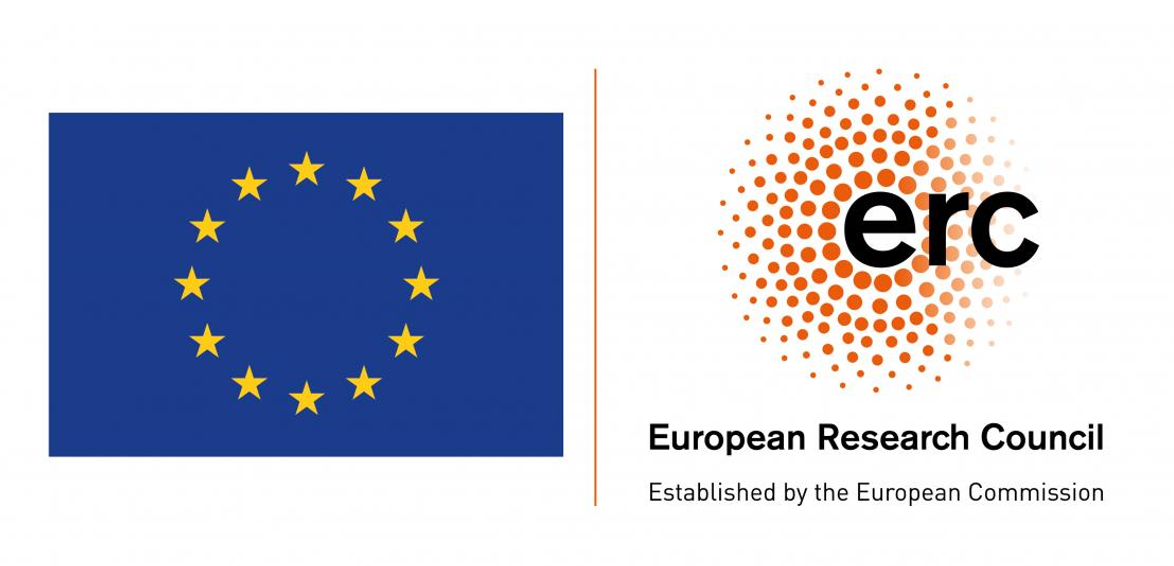Systems Materials Engineering for Post-Lithium-Ion Batteries
Many of today’s obstacles and opportunities for next-generation electrochemical energy storage lie in the complexity of the multiphase materials systems. The physico-chemical interplay of individual materials components defines the overall system properties - similar to the field of systems biology. Electrochemical systems with identical chemical but different structural compositions can show entirely new properties. An intriguing example is the reversible electrodeposition of solid iodine nanoclusters in the confinement of carbon nanopores with sizes < 1 nm (Nature Communications 2020). The same system with slightly larger pores would not allow for persistent deposition of solid iodine and, thus, significant storage of energy. Hence, the properties and function of next-generation energy storage are not only rooted in the chemistry of its individual chemical compounds. Instead, they are defined by reaction mechanisms, structure, and transport in conjunction. Rational design criteria, therefore, rely on a quantitative and systemic understanding across length scales.
Our strategy to deal with this complexity is two-fold:
1. The bottom-up approach
We aim to establish new experimental methods and methods for data analysis. We will use cryo-electron microscopy, operando small angle scattering, and machine-learning-supported stochastic modeling to visualize and quantify the structural evolution during electrochemical operation. We combine the advantages of time-resolved integral structural information, local element-specific microscopy, and quantitative data analysis to recognize even subtle structural transitions with a seamless sensitivity from the atomic to the µm scale.
METROLOGIES
We aim to understand the fundamentals of solid-state and solid-liquid-solid electrochemical conversion of sulfur and more generally poorly conducting high-capacity materials. Equivalent to microelectronics, batteries will be understood as mesoscopic heterostructures, with all the possibilities to alter transport, storage, and charge transfer by mesoscopic structuring. Our research may overturn the common belief that nominally insulating materials cannot be used in high-performance batteries. This could significantly impact how we select future high-energy storage materials. By understanding the interaction of individual compounds, we will design mesoscopic materials structures to control transport, charge transfer, and phase transformations – and ultimately achieve new system properties.
FUNDAMENTALS
Our research may have an important impact on society by realizing high-energy batteries with low cost and abundant sulfur and without critical raw materials. The Li-S battery cathodes, as proposed in the ERC Starting Grant project SOLIDCON, may store ~ 4 times more charge per total electrode mass and ~ 2.5 times more charge per total electrode volume than today’s Li-ion battery cathodes. This translates to ~ 2.2 times higher gravimetric and ~ 35 % higher volumetric energy densities. With more and more advanced manufacturing, the Li-ion battery price is increasingly defined by the raw materials costs of the expensive transition metals. Me-S batteries would eliminate the dependency on transition metals with volatile prizes (Ni, Co) and problematic extraction (Co). Hence, with an increased energy density and the low raw materials cost of S, we could significantly reduce the costs per stored kWh in future batteries.
DEVICE ENGINEERING
2. The data-driven approach
We aim to integrate machine learning into the experimental workflow of battery testing. Enhancing the performance of battery systems by simple experimental parameter variation is often impossible due to the large multidimensional parameter space. Using closed-loop Bayesian optimization, for example, battery systems can be optimized significantly faster - without knowing all details of the underlying physics or testing thousands of battery cells.
Closed-loop optimization of battery performance with machine-learning
Parts of the Figure on the left were adopted from F. Häse et al., Phoenics: A Bayesian Optimizer for Chemistry, ACS Cent. Sci. 2018, 4, 9, 1134–1145. This is an unofficial adaptation of an article that appeared in an ACS publication. ACS has not endorsed the content of this adaptation or the context of its use.
Previous research
Physical charge storage in nanoporous confinement. The essential contribution of Christian Prehal’s Ph.D. in the group of Oskar Paris at the Institute of Physics (Montanuniversität Leoben, Austria) was to establish in situ small- and wide-angle x-ray scattering (SAXS/WAXS) and x-ray transmission to elucidate processes central to capacitive energy storage in supercapacitors: ion exchange, structural rearrangement, and interactions in nanoporous electrodes. The complex multiphase system consisting of ions, water molecules, and carbon required a new way of data analysis. A real-space picture was obtained from stochastic modeling and atomistic Monte Carlo simulations and correlated to the experimental scattering data via numerical Fourier Transformation (see Figure on the right). The synergy of in situ experiments and modelling unlock information that neither would provide alone. This allowed quantifying ion confinement and ion desolvation during device operation for the first time. The work provides conclusive experimental evidence for the long-debated “anomalous capacitance” increase in sub-nanometer pores.
Beyond ion electrosorption, the developed method can uniquely quantify any sub-nanometer structural rearrangements in disordered nanoporous hosts; for example, during water, hydrogen, or CO2 adsorption. The work related to supercapacitors and nanoporous carbons resulted in several publications: e.g., Energy & Environmental Science 2015, Nature Energy 2017, Phys. Chem. Chem. Phys. 2017, Nature Communications 2018, Carbon 2019, ACS Applied Materials and Interfaces 2019
Electrochemical phase transformation on the nanoscale. As a postdoc in the ERC StG project of Stefan Freunberger (former TU Graz, now IST Austria), Christian Prehal expanded the developed scattering methods to post-lithium-ion batteries. In situ SAXS/WAXS was used to study the reversible structural evolution of Li2O2, the active material in lithium-air (Li-O2) batteries, and its relation to physical-chemical mechanisms (PNAS 2021, Energy & Environmental Science 2019, Nature Chemistry 2021). For data analysis, the approach developed for supercapacitors was taken further to explicitly model Li2O2 nucleation and growth in a realistic 3D carbon nanopore model. The outcomes of this work explained capacity limitations and generalized the physicochemical reaction model (ACS Energy Letters 2022). In a fundamental collaborative study on iodide-based aqueous energy storage (Nature Communications 2020), the foundations for non-flammable aqueous batteries were set; with a capacity per cathode mass not far from lithium-ion batteries and a rate capability on par with supercapacitors. The work shows that the electrochemical oxidation of iodide in nanoporous carbons forms persistent solid iodine deposits. Confinement slows dissolution into soluble polyiodides, responsible for otherwise significant self-discharge.
In a recent collaborative project (Nature Communications 2022), Christian Prehal and colleagues investigated the nanoscale structural evolution and physicochemical mechanisms in lithium-sulfur (Li-S) batteries using operando small angle scattering, stochastic modeling, and electron microscopy. Stochastic modelling allowed fitting the SANS data and quantifying the chemical phase evolution in real space. The results show that the deposit nanostructure in Li-S batteries consists of more than one solid phase: the known nanocrystalline Li2S and a second solid Li2S2 phase. The found mechanism suggests that, even in liquid Li-S batteries, half of the capacity is passed as a solid-state process. Hence, solid-state conversion can be fast if active materials are correctly structured at nanometer length scales. Christian Prehal aims to realize such high-rate solid-state S conversion in his recently funded ERC Starting grant project.
Research projects
From 09/2023; ERC Starting Grant
Systems Materials Engineering for High-Rate Bulk Solid-State Conversion in Metal-Sulfur Batteries (SOLIDCON);
Host Institution: University of Salzburg (Austria); Principal Investigator (PI)
2022 – 2025; M-ERA.net, transnational consortium
Advanced Lithium-sulfur batteries with ultramicroporous carbons (ALISA)
Project partners: INM Saarbrücken (Germany), Heraeus (Germany), National Institute of Chemistry (Slovenia) and ETH Zürich (Switzerland); Co-principal investigator (Co-PI); secured funding for ETH Zürich;
2022 – 2023; ETH Zürich Career Seed Grant
Bulk solid-state sulfur to lithium sulfide conversion in lithium-sulfur batteries
Principal investigator (PI), ETHZ funding to support independence of young researchers
2020 – 2022; Horizon 2020, Marie Skłodowska-Curie actions, Individual Fellowship,
Nanoscale phase evolution in lithium sulfur batteries (NanoEvolution),
Host Institution: ETH Zürich (Switzerland); Principal investigator (PI)






